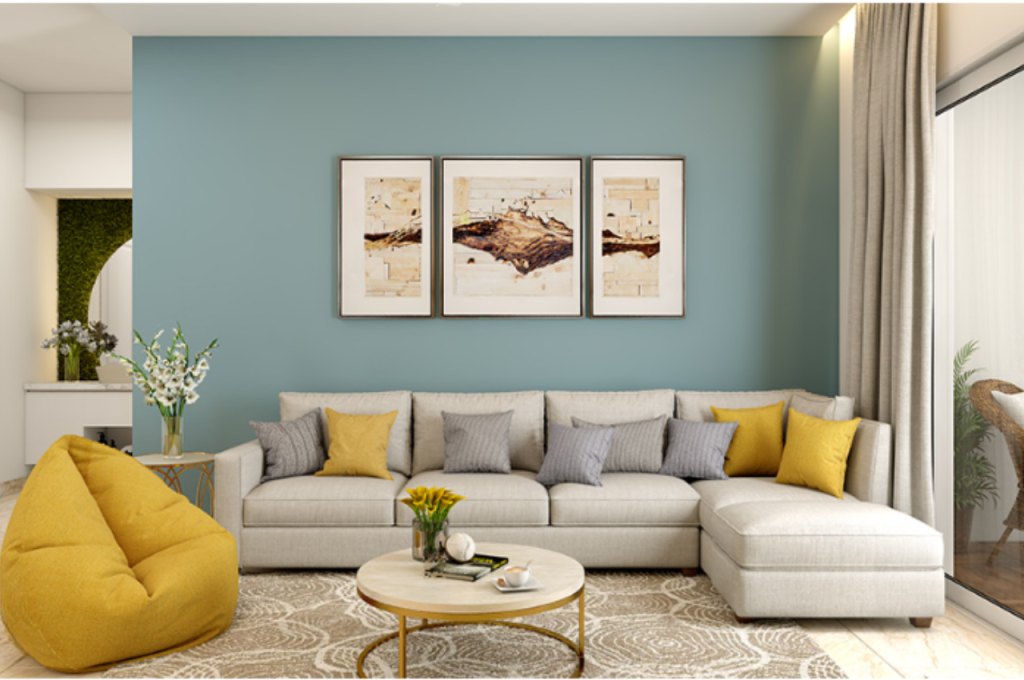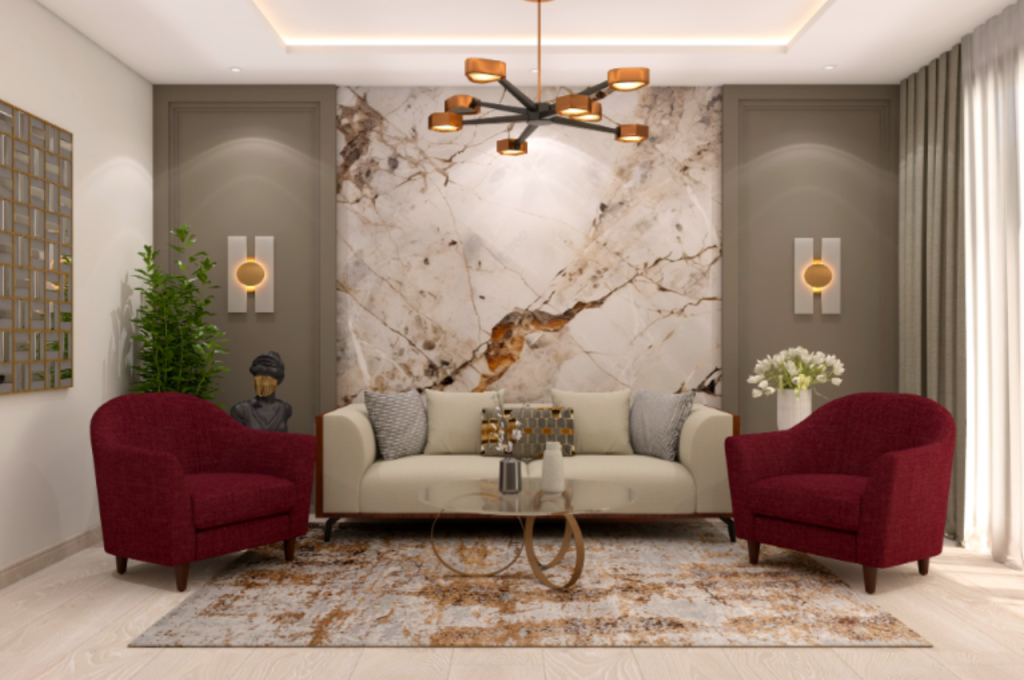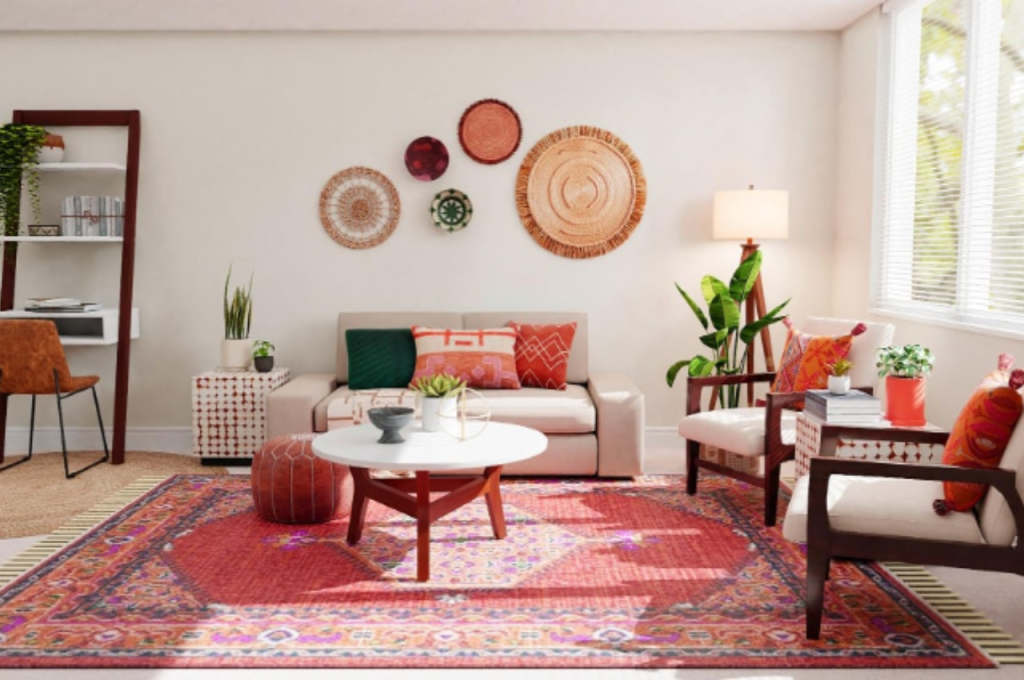By utilizing multifunctional furniture and smart storage solutions, space-saving interior design maximizes a room’s potential while maintaining functionality and aesthetics. Creating a seamless blend of style and practicality, this approach is ideal for small homes and apartments.
By incorporating innovative design elements, it optimizes living spaces, making them appear more spacious and organized. Space-saving interior design focuses on making the most of every square inch in a room, ensuring that no space goes to waste. Through strategic placement of furniture and the use of clever storage solutions, it enables homeowners to enjoy a clutter-free and visually appealing environment, even in limited spaces.
With the right design techniques, even compact living areas can feel open and inviting, providing a comfortable and stylish setting for everyday living.
Innovative Furniture Solutions
When space is limited, innovative furniture solutions are the key to maximizing functionality and style. From multi-functional pieces to modular designs, the right furniture can transform a small space into a multifaceted living area. In this article, we’ll explore the benefits of innovative furniture solutions and how they can help you make the most of your space.

Multi-functional Furniture
Multi-functional furniture is a game-changer for small spaces. These pieces are designed with versatility in mind, serving multiple purposes without taking up extra room. For instance, a sofa bed provides seating during the day and transforms into a bed for overnight guests. A coffee table with hidden storage compartments keeps clutter at bay while acting as a functional surface for dining or work.
Multi-functional furniture is a space-saving powerhouse, allowing you to make the most of every square foot in your home.
Modular Furniture Design
Modular furniture design takes customization to a whole new level. These adaptable pieces can be rearranged and expanded to fit your changing needs. From shelving units that can be reconfigured to fit different spaces to modular seating systems that can be arranged in various layouts, the possibilities are endless. Modular furniture not only maximizes space but also brings a contemporary, customizable flair to your interior design.
Modular furniture design gives you the flexibility to adapt your living space as needed, ensuring that your furniture grows and evolves with you.
Smart Storage Solutions
Discover smart storage solutions for space-saving interior design. Maximize your space with innovative storage ideas that are both stylish and functional. Create a clutter-free and organized living environment with these clever storage solutions.
Utilizing Vertical Space
Maximize vertical space by installing shelves and hanging organizers to make the most of small areas.
Hidden Storage Compartments
Utilize furniture with hidden compartments like ottomans with storage or beds with under-the-mattress drawers.
Optimizing Small Living Areas
Optimizing small living areas requires thoughtful strategies and innovative solutions to make the most of limited space.
Strategic Layout Planning
Strategic layout planning involves arranging furniture and decor in a way that maximizes space utilization.
Sensible Use of Lighting
Sensible use of lighting is crucial in small spaces to create an illusion of openness and enhance functionality.
Creating Illusions of Space
Creating illusions of space is a key concept in space-saving interior design. By using clever techniques and design principles, you can make a small room feel much larger and more open. Two effective strategies for creating the illusion of space are incorporating mirrors and reflective surfaces, as well as adopting minimalist design principles.
Mirrors and Reflective Surfaces
Mirrors and reflective surfaces are an excellent way to create the illusion of space in any room. They can reflect light and extend the perceived limits of a space. Placing mirrors strategically can make a room appear larger and brighter.
Consider these diverse ways in which mirrors can enhance your space-saving efforts:
- Position a large mirror on a wall opposite a window to reflect natural light, instantly brightening and enlarging the room.
- Hang a mirror on a wall near a main light source to amplify the effect of artificial lighting, making the space appear larger and more welcoming.
- Strategically placing small mirrors on a wall can create a sense of depth, making the room appear larger than it is.
Reflective surfaces, such as glossy countertops and metallic finishes, can also be used to enhance the illusion of space. These surfaces bounce light around the room, giving the impression of more space and making the area feel more open and airy.
Minimalist Design Principles
Minimalist design principles are a fantastic way to maximize space and create a sense of openness. The concept centers around the idea of using clean lines, simple forms, and a clutter-free aesthetic.
Consider the following minimalist design tips:
- Choose furniture and decor with a sleek and streamlined design to avoid visual clutter.
- Opt for light, neutral colors on walls and furniture to create a sense of airiness and openness.
- Keep surfaces and floors clear of excessive objects and furniture to allow for easy movement and create an open space.
By incorporating minimalist design principles, you can create a visually clean and uncluttered space that gives the perception of more room.
Incorporating Technology for Efficiency
Incorporating technology into your space-saving interior design is a smart way to maximize efficiency and create a more functional living space. With the advancements in home automation systems and space-saving appliances, you can easily streamline your home and enjoy the benefits of a well-organized and efficient living area.

Home Automation Systems
Home automation systems are a revolutionary addition to any space-saving interior design. With just a few taps on your smartphone or a voice command to your smart speaker, you can control various aspects of your home, from lighting and temperature to security and entertainment systems. This level of convenience not only saves time but also enhances efficiency by allowing you to automate routine tasks and adjust settings according to your preferences.
For instance, smart lighting systems can be programmed to turn on and off automatically, adjusting the brightness based on the time of day or your activities. This not only eliminates the need for manual switching but also helps to create the illusion of more space by optimizing the lighting conditions in different areas of your home.
Home automation systems also offer the convenience of remote access, allowing you to monitor and control your home’s functionality even when you’re away. This means you can adjust the thermostat, turn off appliances, or even receive notifications about potential security breaches, all from the palm of your hand. By integrating home automation into your space-saving design, you can effortlessly manage your living environment and make the most of your limited space.
Space-saving Appliances
When it comes to space-saving interior design, having efficient and compact appliances is crucial. Modern space-saving appliances are designed with functionality and optimization in mind, allowing you to utilize every inch of your living space effectively. These appliances are specifically engineered to occupy minimal space while still providing the same functionality as their larger counterparts.
One popular space-saving appliance is the combination microwave and oven, which eliminates the need for separate appliances and saves valuable countertop or cabinet space. Similarly, compact and stackable washer and dryer units are perfect for small laundry rooms or closets, offering the same functionality as full-size machines while taking up considerably less space.
Another innovative space-saving appliance is the wall-mounted or drop-down table. These tables can be folded or collapsed when not in use, freeing up valuable floor space and providing a versatile solution for dining or working areas. Similarly, wall-mounted storage units and floating shelves are excellent options for maximizing vertical space and decluttering your living area.
Incorporating space-saving appliances into your interior design not only helps to create a more organized and visually appealing living space but also allows you to efficiently utilize every square inch of your home.
Maximizing Natural Light
When it comes to interior design, maximizing natural light can completely transform a space, making it feel more open, airy, and inviting. Natural light has the power to enhance the aesthetics of a room, create a sense of warmth, and even improve our mood and productivity. Incorporating smart design elements that maximize natural light is essential in creating a bright and welcoming environment.
Window Treatments
Choosing the right window treatments can have a significant impact on the amount of natural light that enters a room. Opt for sheer curtains or lightweight fabric blinds that allow sunlight to filter through while still providing privacy. Avoid heavy, opaque drapes that obstruct natural light, and opt for vertical blinds that can be easily adjusted to control the amount of light entering the space.
Open Floor Plans
An open floor plan design eliminates unnecessary barriers and allows natural light to flow freely throughout the entire space. By removing walls and partitions, the light from windows and doors can illuminate multiple areas, creating the feeling of a more spacious and open environment. Incorporating glass partitions or transparent room dividers can further enhance the uninterrupted flow of natural light throughout the space.
Flexible Design for Multi-purpose Rooms
In today’s modern homes, space is often at a premium and every square foot counts. However, with a little creativity and thoughtful planning, you can transform even the smallest rooms into versatile, multi-functional spaces that meet your family’s needs.
Convertible Furniture
In small spaces, convertible furniture is a game-changer. From sofa beds to expandable dining tables, these pieces serve more than one function seamlessly.
Versatile Room Dividers
Versatile room dividers provide flexibility in open layouts. They offer privacy when needed and can double as storage units or decor elements.
Balancing Aesthetics with Functionality
When it comes to interior design, finding a balance between aesthetics and functionality is crucial. It’s not just about creating a beautiful space; it’s about ensuring that the space serves its purpose efficiently. Here, we explore how you can achieve this delicate balance through space-saving designs that combine both form and function.
Decor That Serves A Purpose
One of the key elements of space-saving interior design is incorporating decor that serves a purpose. Instead of simply adding ornamental pieces, you can opt for items that are not only visually appealing but also have functionality. For example, a wall-mounted shelving unit can double as storage and an attractive display area. By choosing decor that serves a purpose, you eliminate the need for extra furniture and maximize the functionality of the space.
Organized Clutter-free Spaces, Ensuring
Another way to balance aesthetics with functionality is by creating organized and clutter-free spaces. A well-organized room not only looks visually appealing but also enhances the functionality of the space. Utilize storage solutions such as baskets, bins, and storage ottomans to keep clutter at bay. Additionally, consider incorporating multifunctional furniture pieces that offer hidden storage compartments. By maintaining an organized and clutter-free environment, you can maximize the usable space and create a visually pleasing atmosphere.

Conclusion
By implementing smart space-saving techniques, you can create a functional and stylish home. Small changes can make a big impact on your living space. Embrace creativity and maximize every corner to achieve a clutter-free environment. Remember, less is more when it comes to interior design.
Let your space reflect your personality effortlessly.

